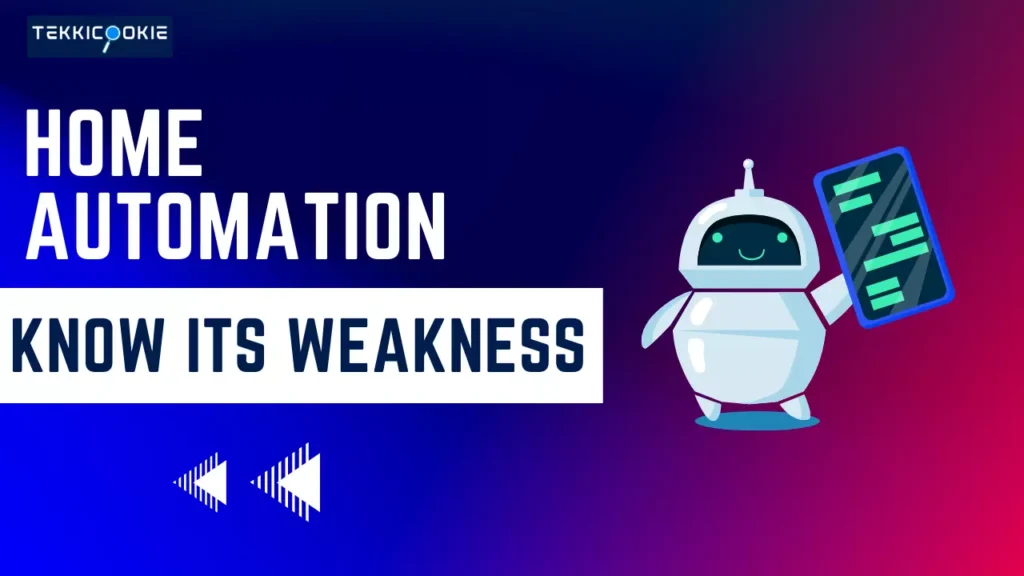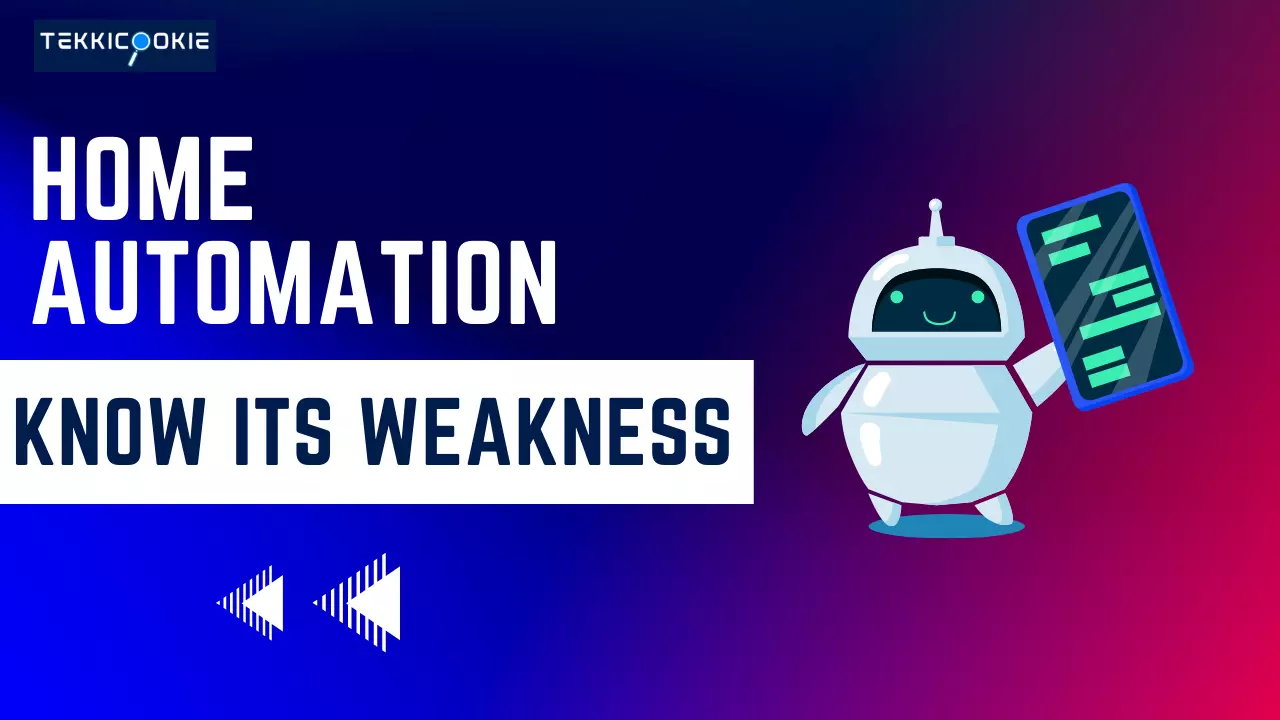In our modern world, home automation has gained significant popularity, offering convenience, comfort, and efficiency. The ability to control various aspects of our homes through connected devices has revolutionized the way we interact with our living spaces.
However, like any technological advancement, home automation has its fair share of weaknesses and limitations that should not be overlooked. Understanding these weaknesses is crucial for anyone considering implementing home automation systems. In this article, we will explore and shed light on the weaknesses of home automation to help you make informed decisions.

Weaknesses of Home Automation: Security Risks
One of the primary concerns with home automation revolves around security risks. The interconnected nature of these devices poses vulnerabilities that can be exploited by malicious actors.
Without standardized security protocols across all devices, there is a risk of unauthorized access to sensitive information or control of your home’s automation system.
This potential breach of privacy raises concerns about data collection and storage, as well as the possibility of surveillance through compromised devices.
In today’s interconnected world, where devices such as smart locks, cameras, and thermostats communicate with each other, ensuring robust security measures is of paramount importance.
However, the lack of universal security protocols among different manufacturers and devices can leave gaps that hackers can exploit.
Without standardized encryption methods, authentication procedures, and secure data transmission channels, unauthorized access to home automation systems becomes a real possibility.
Moreover, the collection and storage of data by home automation devices can also pose privacy risks. Information such as your daily routines, preferences, and usage patterns may be gathered and stored by these devices.
If not adequately protected, this data could be vulnerable to unauthorized access, potentially compromising your privacy.
Read More: Home Automation for Seniors | Disabled
Reliability and Compatibility Issues
While home automation systems aim to simplify our lives, they are not immune to technical glitches and malfunctions. These systems heavily rely on a stable internet connection, making them vulnerable to disruptions.
If your internet service goes down or experiences intermittent outages, the automation features may become temporarily unavailable, hampering the smooth functioning of your smart devices and systems.
Compatibility issues between different devices and manufacturers can also pose challenges when integrating various components into a cohesive system.
Home automation ecosystems often consist of devices from multiple manufacturers, each with its own proprietary software and communication protocols.
Ensuring seamless interoperability among these devices can be challenging, leading to frustrations when attempting to integrate them into a unified automation system.
Power outages and system failures can also impact the functionality and control of home automation.
In the event of a power outage, devices may lose connectivity, rendering automation features temporarily inoperable.
Furthermore, system failures or malfunctions in individual devices can disrupt the entire automation ecosystem, requiring manual intervention to restore functionality.
Complexity and User Experience
The complexity of home automation systems can be a barrier to entry for many users. While these systems aim to simplify our lives, the initial setup and configuration process can be daunting, requiring technical knowledge and expertise.
Understanding the intricacies of device pairing, network configuration, and automation programming may require a steep learning curve for those unfamiliar with the technology.
Furthermore, troubleshooting issues that arise with home automation systems can be challenging for non-technical users.
When devices fail to communicate or automation routines do not execute as intended, diagnosing and resolving the problem may require technical expertise or the assistance of customer support.
There is also a concern that overdependence on automation can lead to a loss of basic skills and reduced human interaction.
With home automation taking care of routine tasks, individuals may become less proficient in manual operations, such as adjusting thermostats, opening curtains, or turning lights on and off.
Additionally, the reduced need for physical interactions with the environment may limit social engagement and diminish human-to-human interaction within the home.
Read More: How does home automation help the disabled?
Cost and Infrastructure
Implementing home automation can come with significant costs, both in terms of initial investment and ongoing maintenance.
The upfront expenses for devices and installation can be substantial, especially when integrating with existing systems.
High-quality smart devices often come with a premium price tag, which can add up when outfitting an entire home with automation capabilities.
Furthermore, maintenance and upgrades may also incur additional costs. To ensure optimal performance and security, regular updates and patches must be applied to the devices and automation software.
As technology evolves, compatibility issues may arise, requiring updates or even the replacement of certain components to ensure seamless integration with the latest advancements.
Ethical Considerations
The rise of automation raises ethical concerns, particularly regarding job displacement and its economic impacts.
As automation takes over certain tasks traditionally performed by humans, there is a risk of unemployment for individuals in affected industries.
This can have far-reaching socioeconomic implications, requiring careful consideration and proactive measures to address potential inequalities and ensure a smooth transition for affected workers.
Additionally, the increased energy consumption associated with home automation can have adverse environmental effects.
The continuous operation of smart devices and the additional power required to maintain connectivity and run automation routines contribute to higher energy consumption.
Responsible energy management practices, such as optimizing automation routines and using energy-efficient devices, are necessary to mitigate the environmental impact of home automation.
Lack of Personalization
While home automation offers convenience, it often falls short in terms of personalization. Generic automation routines provided by manufacturers may not cater to individual preferences or adapt to changing needs.
For example, preset lighting schedules may not align with an individual’s preferences for ambient lighting, or preconfigured temperature settings may not account for specific comfort requirements.
Inflexible predefined schedules can lead to inconvenience and frustration when adjustments are required but are difficult to implement within the automation framework.
Customizing automation routines to align with individual lifestyles, preferences, and changing circumstances may require advanced programming skills or the use of third-party applications, creating additional complexity and potential compatibility issues.
Read More: What is a Smart Home for Elderly?
Legal and Regulatory Challenges
Home automation brings forth legal and regulatory challenges that must be addressed. When system failures occur, the question of liability arises.
Malfunctioning automation features or devices can result in accidents or damages within the home.
Determining responsibility and liability for such incidents becomes critical to ensure appropriate compensation and resolution.
Addressing legal frameworks and accountability is necessary to ensure the responsible use and maintenance of home automation systems.
Clear guidelines and regulations are required to define the responsibilities of manufacturers, service providers, and users.
This includes ensuring compliance with data protection laws when handling personal information within the automation ecosystem.
Safeguarding against potential data breaches and misuse of personal information is essential to maintain user privacy and prevent legal consequences.
Conclusion
While home automation offers numerous benefits, it is essential to approach it with a balanced perspective.
Acknowledging the weaknesses of home automation is vital for making informed decisions regarding its implementation in our homes.
Security risks, reliability issues, complexity, cost, ethical considerations, lack of personalization, and legal challenges are all factors that should be considered.
With continuous improvements and advancements in technology, we can strive to overcome these weaknesses of home automation and create more robust and secure home automation systems.
Standardized security protocols, enhanced compatibility among devices, improved user experience, cost-effective solutions, ethical considerations, personalized automation, and well-defined legal frameworks will contribute to a more reliable and sustainable future for home automation.
By addressing these weaknesses of home automation, we can maximize the benefits of home automation while minimizing potential risks and limitations.
Hey there, folks! If you have liked the article then don’t forget to give us a follow on our social media channels below. That way, you’ll be the first to know about all the exciting updates!
